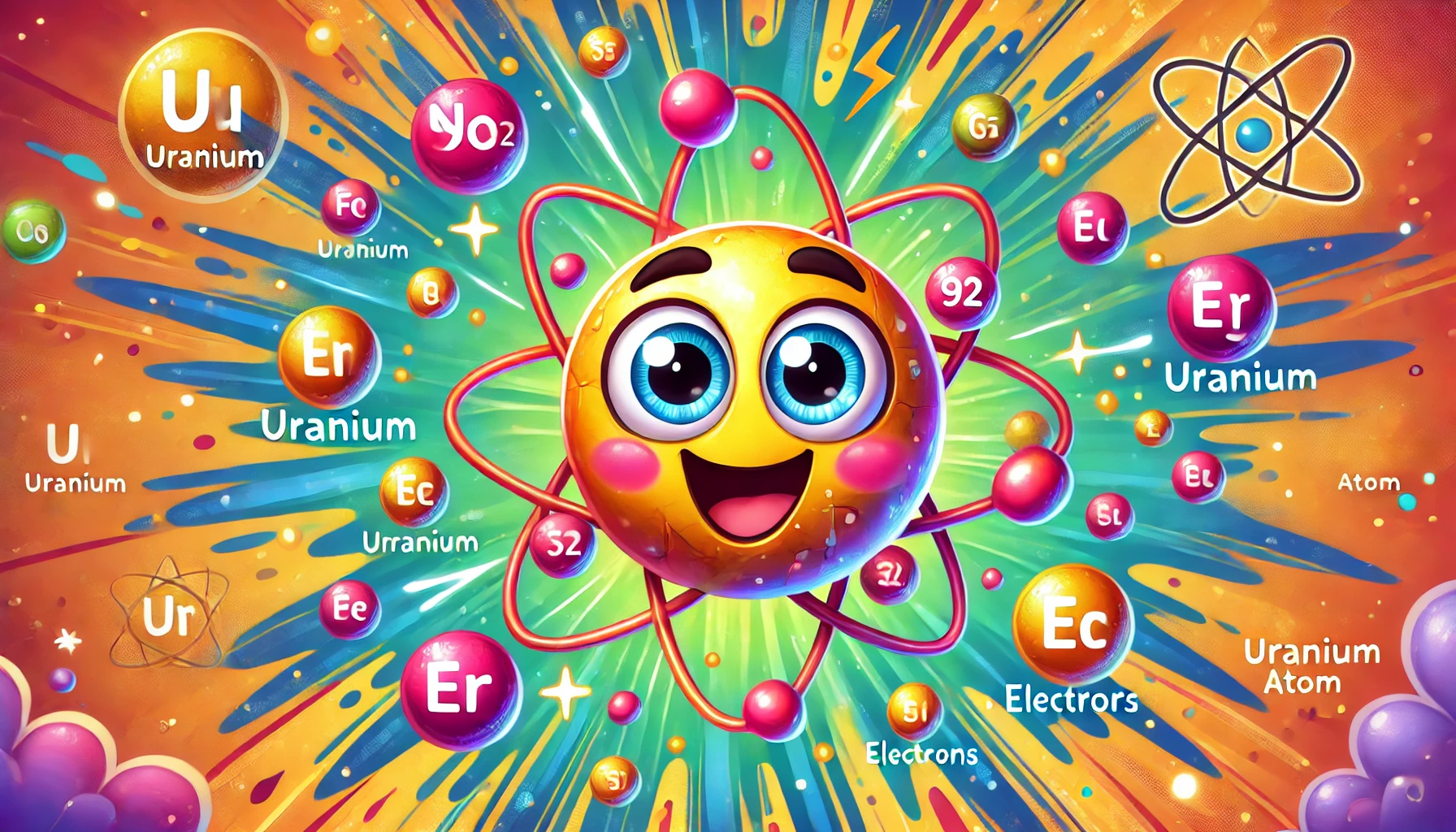Understanding Uranium: Properties, Uses, Health Risks, and Fascinating Facts
Understanding Uranium: Properties, Uses, Health Risks, and Fascinating Facts
Table of Contents
- Introduction to Uranium
- Properties of Uranium
- Uses of Uranium
- Health Risks of Uranium Exposure
- Interesting Facts about Uranium
- Environmental Impact of Uranium
- Conclusion
- References
Understanding Uranium: Properties, Uses, Health Risks, and Fascinating Facts
Introduction to Uranium Uranium is a chemical element with the symbol U and atomic number 92. It is a heavy metal with significant radioactive properties, making it a crucial element in the fields of energy production and nuclear technology. This article explores the properties, uses, health risks, and interesting facts associated with uranium, providing a comprehensive understanding of this important element.
Properties of Uranium Uranium is characterized by several distinct physical and chemical properties.
Physical Properties
- Appearance: Uranium is a dense, silvery-white metal that tarnishes in air, forming a layer of uranium oxide.
- Density: The density of uranium is 19.1 g/cm³.
- Melting Point: Uranium has a melting point of 1,132°C (2,070°F).
- Boiling Point: The boiling point of uranium is 4,131°C (7,488°F).
Chemical Properties
- Reactivity: Uranium is chemically reactive and can form compounds with various elements, including oxygen, fluorine, and chlorine.
- Compounds: Uranium forms various compounds, such as uranium dioxide (UO₂), uranium hexafluoride (UF₆), and uranium trioxide (UO₃).
Uses of Uranium Uranium has numerous applications across different industries due to its unique properties.
Nuclear Energy
- Nuclear Reactors: Uranium-235, a fissile isotope, is used as fuel in nuclear reactors to produce electricity. When uranium-235 atoms are split through fission, they release a large amount of energy.
- Nuclear Weapons: Uranium-235 is also used in the production of nuclear weapons, where its ability to undergo rapid fission is harnessed to create powerful explosions.
Industrial Applications
- Radiation Shielding: Uranium’s high density makes it effective for use in radiation shielding in medical and industrial applications.
- Counterweights and Ballasts: Due to its density, uranium is used in counterweights for aircraft and in ballast keels for sailboats.
Scientific Research
- Radiometric Dating: Uranium isotopes are used in radiometric dating techniques to determine the age of rocks and geological formations.
Health Risks of Uranium Exposure Uranium is radioactive, and exposure can pose significant health risks, particularly through inhalation or ingestion of uranium dust or compounds.
Inhalation and Ingestion
- Radiation Poisoning: Inhalation or ingestion of uranium can cause radiation poisoning, with symptoms including nausea, vomiting, hair loss, and damage to internal organs.
- Kidney Damage: Uranium can accumulate in the kidneys, leading to nephrotoxicity and increased risk of kidney disease.
Skin and Eye Contact
- Skin Irritation: Direct contact with uranium compounds can cause skin irritation and dermatitis.
- Eye Damage: Exposure to uranium dust or solutions can cause eye irritation and potential damage.
Chronic Exposure
- Cancer Risk: Prolonged exposure to uranium increases the risk of developing various cancers due to its radioactivity, particularly lung cancer from inhaling uranium dust.
Interesting Facts about Uranium Uranium has several intriguing aspects that make it an interesting element.
Discovery
- Discovered in 1789: Uranium was discovered by German chemist Martin Heinrich Klaproth in 1789. He named it after the newly discovered planet Uranus.
Unique Properties
- Radioactivity: Uranium is naturally radioactive and was the element through which radioactivity was first discovered by Henri Becquerel in 1896.
- Nuclear Fuel: Uranium-235 is one of the few materials that can sustain a nuclear chain reaction, making it vital for nuclear power and weapons.
Isotopes
- Radioactive Isotopes: Uranium has several isotopes, including uranium-238 and uranium-235. Uranium-238 is the most abundant, while uranium-235 is fissile and used in nuclear reactors and weapons.
Environmental Impact of Uranium Uranium mining and use have significant environmental impacts, and its extraction and use must be managed responsibly.
Natural Occurrence
- Abundance: Uranium is relatively abundant in the Earth’s crust and is found in minerals such as uraninite and pitchblende.
- Mining: Uranium mining can lead to environmental contamination, including soil and water pollution.
Pollution and Bioaccumulation
- Environmental Pollution: Uranium can enter the environment through mining activities, industrial emissions, and improper disposal of radioactive waste.
- Bioaccumulation: Uranium can accumulate in the food chain, posing risks to wildlife and humans who consume contaminated food and water.
Waste Management
- Nuclear Waste: The disposal of nuclear waste from reactors is a major environmental concern. Spent fuel contains highly radioactive isotopes that must be carefully managed and stored.
Conclusion Understanding uranium, its properties, uses, health risks, and interesting facts provides valuable insight into this significant element. While uranium has crucial applications, particularly in nuclear energy and scientific research, its radioactivity and associated health risks necessitate careful handling and responsible management. Ongoing research and advancements in technology continue to shed light on the complexities and potential uses of uranium in modern science and industry.

<ⓒ WizardMedics (wizardmedics.com)>


